
August 13, 2012
 Joe Kubert, 1926-2012
Joe Kubert, 1926-2012

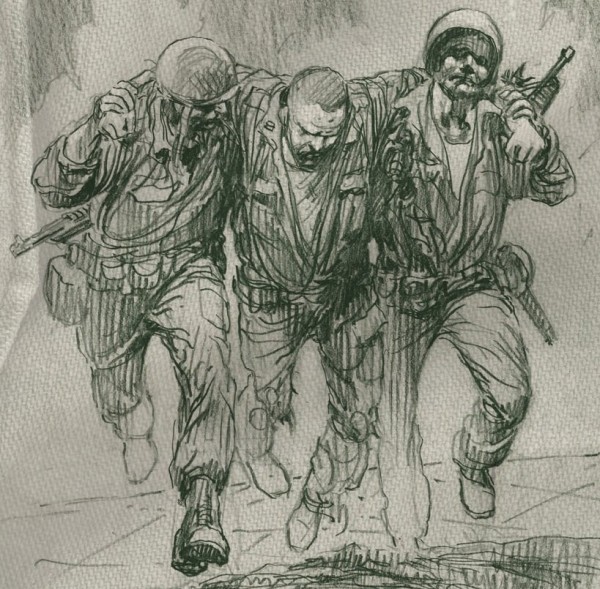 Joe Kuber
Joe Kubert, one of the foundational artistic talents of American comic books and a key figure in comics education whose career spanned parts of nine decades,
passed away this weekend it is believed after a hospital stay. He was 85 years old.
Joe Kubert was born Yosaif Kubert on September 18, 1926, in the small town of Yzeran in what was then southeast Poland, and now is part of Ukraine. His family moved to Brooklyn when Kubert was less than a year old -- in fact, a previous attempt had been scotched because Kubert's mother had been pregnant with the future Hall Of Fame artist. Kubert's father was a kosher butcher who worked about six blocks from home, while his mother ran a restaurant to which the rooms where Kubert lived with his parents and four sisters were attached.
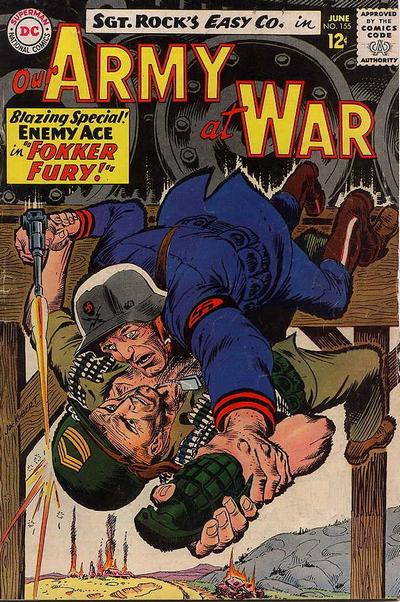
Like many cartoonists born in the 1920s, Kubert was a precocious drawer. He first drew around the home and in the neighborhood, encouraged by his family and neighbors. "I was really blessed and fortunate that I could pursue that which I loved to do," Kubert told interviewer Gary Groth in 1994. "I recall that when I was a kid of three or four, I used to be given boxes of chalk by the neighborhood people -- penny boxes of chalk, so I could draw in the gutters. They enjoyed seeing me draw." Despite his parents sharing in a popular conception of the time not to let children pursue an activity for which there might not be future gainful employment, Kubert describes himself as lucky that his parents never deterred him in his artistic pursuits.
Kubert was also a fan of the movies like many boys his age, and accessed more visual culture by reading comic strips in newspapers like the
New York Journal American and the
New York Daily Mirror. He would later cite adventure strip stalwarts Hal Foster, Alex Raymond and Milton Caniff as particular favorites.
The comics legend portion of Kubert's life began when he broke into the nascent comic book industry at approximately 12 or 13 years of age -- the accounts differ, and Kubert himself copped to some uncertainty as to exactly how his career began and when. The story also wavered between whether this apprentice-level work came at the Harry "A" Chesler comics shop or through an acquaintance named Melvin Budoff with a relation at MLJ. Through that contact, or perhaps solely due to his own initiative, Kubert was drawn into the professional circle of artists that did work for MLJ such as Mort Meskin, Harry Shorten and Charles Biro. Kubert's talent and drive made him a studio favorite and got him what love-level work was available; he would continue to work while a student at High School Of Music And Art. It was the industriousness applied in that phase of his life that would become a hallmark and helped make Kubert one of the most successful and prolific mainstream comic book artists of all-time.
In his obituary for Kubert in The Comics Journal, historian Bill Schelly identifies Irv Novick as another professional from whom the young Kubert received instruction. He also cites a period where Kubert eventually assisted on
The Spirit in Stamford at Will Eisner's Studio -- where by one account he was focusing on coloring for comic book reprints, by another moving to inking Lou Fine after more humble work erasing pages and cleaning up -- and stints in comics shops run by Jerry Iger and Emanuel Denby.
Kubert received his first professional credit in
Catman Comics #8, which was published in early 1942, for a back-up featuring "Volton the Human Generator." He would continue drawing that feature for a few issues, and was soon providing work to the Blue Beetle feature at Fox Comics. Kubert also worked as an inker when he was a teen, for Mort Meskin and Bob Montana among others.
The artist's first work for DC Comics came both penciling and inking a massive superhero team story featuring the Seven Soldiers Of Victory for the publication
Leading Comics, published by All-American before they were folded into DC proper. Kubert began to do his lion's share of work for DC as the decade progressed; his first big assignment and career-establishing gig was on the Hawkman feature that ran in
Flash and
All-American. That was for the famed editor Sheldon Mayer, whom Kubert would credit for helping make him a fully-functioning, professional comic book artist. Other clients during the 1940s included Fiction House, Avon and Harvey.
When asked by Groth in 1994 if he was ever asked to change his work by the notoriously tough DC editorial staff, Kubert said this didn't happen to him the way it did some other comic book artists. "It's a funny thing," he said to Groth, "I've seen Shelly Mayer verbally rip a guy apart. I've seen him take original pages and fling them right across the room because he felt the guy didn't do a good, quality job. It happened to Irwin Hasen. Irwin and Shelly were good, personal friends, but when it came to the work there was no fooling around. If Shelly wanted to make a point, that's what he did. For some reason, he never did that with me. It may have been because... well, maybe he figured that I wouldn't accept it. I was younger -- and bigger -- and maybe he thought I'd pick him up and throw him out the window. Maybe he was right." Kubert's general health and vigor, and a quality he was said to have projected as an artist not to be trifled with seemed to have stood him in very good stead during his years negotiating and working with a variety of publishers, particularly the nettlesome gauntlet at DC. Kubert would go on to do some of his best work with writers and editors that other talents found difficult, such as as the writer/editor Robert Kanigher.
Kubert served in the military from 1950 to 1952, first at Fort Dix in Jersey, then in Germany. He married Muriel Fogelson shortly after induction. The Kuberts had settled in Princeton, and Kubert initially commuted to their apartment; he later set up a studio in the southern German town of Sonthoffen while overseas. Both arrangements allowed him to keep working in comics, primarily for DC where he began a partnership with the editor Julie Schwartz. Because of Kubert's military obligations, he said that Schwartz allowed him to generate two-page and three-page stories entirely on his own, as time became available for him to work. Kubert also claimed that Schwartz was not wholly enamored of his work during that period.

Joe Kubert took on the managing editor position at St. John in the 1950s. He, his High School Of Music And Art classmate Norman Maurer and Leonard Maurer (Norman's brother) assembled the first 3-D comic books, starting with 1953's
Three Dimension Comics #1. They were a sales sensation even at an significantly increased price over typical comic books, something that business people operating comics people swore up and down could not happen. That trend quickly burnt itself out, Kubert claimed later because of poor content driving copycat efforts. Kubert enjoyed a share in royalties while at St. John's, which was a rare business relationship to have at that time.

Kubert's first major creation also came at St. John, the prehistoric character Tor -- with Norman Maurer. That character debuted in late 1953. Tor is one of the few known characters with a publishing history tied to its creator rather than any single publishing house, and has been in comics offered from Eclipse, Epic and DC in addition to its original home. He was even packaged at one point as a newspaper comic that failed to come off. Kubert said that receiving the copyright on Tor was as simple as requesting from the heir to the St. John publishing enterprise that the copyright be returned to him after the publisher had moved away from comics. The legally appropriate person provided a letter doing just that. In terms of his creative development, Tor was the first major effort where Kubert provided art and writing.
For that decade's premier publisher EC Comics Kubert provided two art jobs, working with writer/editor Harvey Kurtzman.
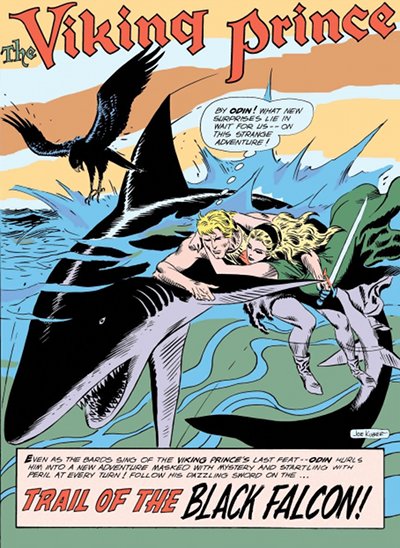
Kubert began to freelance in a major way for DC Comics again in 1955, taking them on as a client at the same time he also provided work to publishers such as Lev Gleason and the company owned by Martin Goodman during its "Atlas" era. He soon dropped the other work for full-time gigs from major publisher DC, splitting time between high-concept adventure characters such as The Viking Prince and a new iteration of Hawkman, but also starting into a legendary run on that publisher's war titles -- particularly the Sgt. Rock and Haunted Tank features. His primary contact at the company went from a half-dozen various editors depending on the project and soon settled on Bob Kanigher. Kubert cited Kanigher's ability to think as a writer in visual terms, and the corresponding talent to favor drawing that had the emotional impact that comes from effective writing. Kanigher's scripts were sparse enough to give Kubert incredible leeway with how to interpret a story, and he was open to hearing from the artist on how to reproduce and present the final product. "He's the only guy I know in this business who never missed a deadline," Kubert would later claim.
The late 1950s saw the Kanigher/Kubert team do a run of respected
Viking Prince stories, which ended in '59. Although as mentioned he returned to the Hawkman feature in the early part of the 1960s to much acclaim, his work with the Sgt. Rock character -- shaped by Kanigher and Kubert starting in 1959 from previous work done by Bob Haney, Ross Andru and Mike Esposito -- became one of the touchstones of his long career and one of the anchor properties at the company. Frank Rock and Easy Co. became the stars of
Our Army At War and
Showcase, with the former title eventually becoming
Sgt. Rock and running until 1988, with a re-run title lasting until 1992 -- far past the date where DC had reliable, serious commitments to anything ongoing other than series featuring superheroes. Rock was also a famous crossover character -- particularly with Batman -- and was an early candidate for a move into film. An older version of the character was even folded into the wider DC universe and the character's World War 2 exploits became the source of stand-alone efforts over the last dozen or so years.

From 1965 to 1967, Kubert provided art to the legendary failed syndicated daily
Tales Of The Green Beret for The News Syndicate, working with writer Jerry Capp. Despite its tie-in to the popular pop-culture phenomenon of the same name and the initial success the syndicate had in placing the feature,
Tales hit the market just as adventure strips were fading, public exposure to the realities of what war looked like overseas was rising, and opposition to US involvement in the Vietnam War was beginning to boil under the surface. None of the blame for the strip's eventual end fell to Kubert's art, which was as lush and vibrant as anything that appeared in the newspapers that decade and was widely recognized as a strong effort in a difficult assignment. It was only after subsequent artists failed to find a working level with the strip that the feature was canceled. Kubert said he left because he was unhappy.

Kubert took on a staff position at DC Comics from 1967 to 1976, serving as the company's director of publications. He told Groth in '94 that between the staff position and the work he was continuing to do for DC's comics, he frequently worked 12- to 14-hour days, with many more in short bursts when deadlines loomed. Kubert even took work on vacations. Kubert's best-known comics during that period may have been a run of
Enemy Ace comics with Kanigher and a major effort on the Edgar Rice Burroughs property Tarzan, which after editing in partnership with Joe Orlando eventually all came to Kubert in an editorial sense as well as his providing a number of pages of artwork.
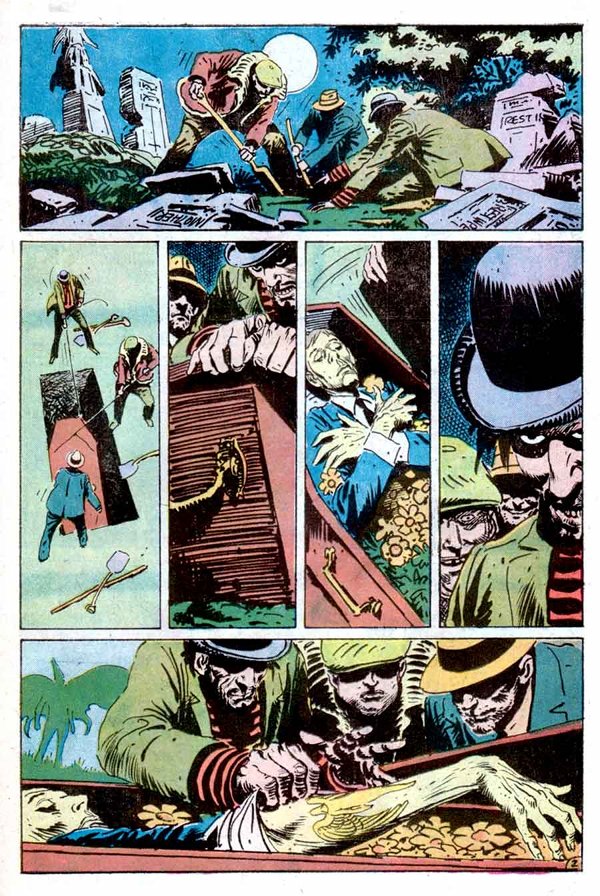
Kubert created the character Ragman in 1976 with writer Robert Kanigher, as part of a general DC effort to find permutations of the superhero formula as the industry struggled a bit before a fuller move to direct market retail by decade's end and in the 1980s. While perhaps best known as one of DC's creative misfires, or perhaps proof of Kubert's general lack of suitability to the direct of superhero comics in that decade, there was certainly nothing wrong with the look of those comics or the assured narrative hand that Kubert brought to the project. An under-appreciated run of covers on
Rima, The Jungle Girl two years earlier had underlined a similar point. While the character and the comic might have been mostly forgettable,
the Rima covers by Kubert were mostly stunning examples of their craft, full of bold sweeping shapes that guided and caressed the eye while introducing a story hook designed to entice the potential reader. Kubert had a rare skill for design in that he could do covers that suggested movement but also more static pieces defined by their balance between competing elements.
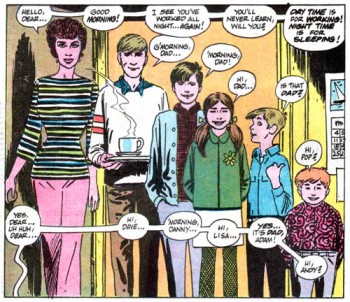
The Kubert family had moved to Dover, New Jersey in the early 1960s, where all five of the Kubert children -- four sons and a daughter -- would be raised. The Kubert School was founded Joe and Muriel in 1976. Based in part on the hands-on education that Kubert received from fellow comics pros back in the late 1930s and early 1940s, the Kubert School became quickly known throughout the comics world for its singular focus and for the ads that ran in comics where aspiring artists might see them. The timing came as Muriel was able to take on the school's business aspects as the kids became old enough to function more or less on their own -- she had a degree in business. When an appropriate building for the school came up for sale, the Kubert moved forward with their plans. The first class at the two-year school was 22 people and included future pros as Steve Bissette, Rick Veitch, Rick Taylor and Tom Yeates. Early instructors included Hy Eisman, Lee Elias, Dick Giordano and Ric Estrada. Irwin Hasen and Tex Blaisdell joined the faculty a few years later.
Kubert's son's Adam and Andy were students at the school, and later became popular professional of their own accord. Kubert told Groth he taught them the same as any other students except that he was harder on the pair.
Joe Kubert continued to work at both the school and in comics during the 1980s. One ambitious project,
The Redeemer, became one of that decades most notoriously never-released comics; Kubert cited a lack of time to complete the work. A key Kubert comic that was published from 1984 and 1993 for the Jewish Magazine
The Moshiach Times featured religious-themed work. It was eventually collected as
The Adventures of Yaakov and Isaac in 2004.
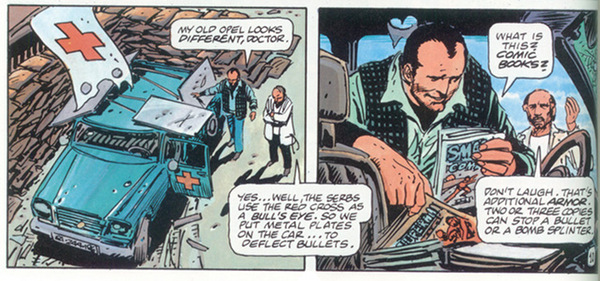
In the 1990s, when many of his peers were settling into retirement or semi-retirement status frequently not of their own choosing, Kubert began a remarkable run of stand-alone graphic novel work and short runs of comic books that were a career unto themselves. He created the Abraham Stone series for Malibu (and later Marvel) in the first half of that decade, and did a beautifully drawn
Tor series for Epic in 1993. In 1996,
Fax From Sarajevo was released in hardcover form. Over 200 pages in its initial release,
Fax From Sarajevo was later expanded by about 20 pages when moved into trade paperback format. The book was instigated by a series of faxes the artist received from his European agent and friend Ervin Rustemagic when Sarajevo was under siege and the lives of he and his family were in danger for nearly three years. It featured an incredibly appealing "look" from the artist, more European and thin-lined as opposed to the heavier inks and feathering of past work. The
Tex work was also done in the 1990s, and was originally created for publication in the Italian market although an English-language version was eventually published.
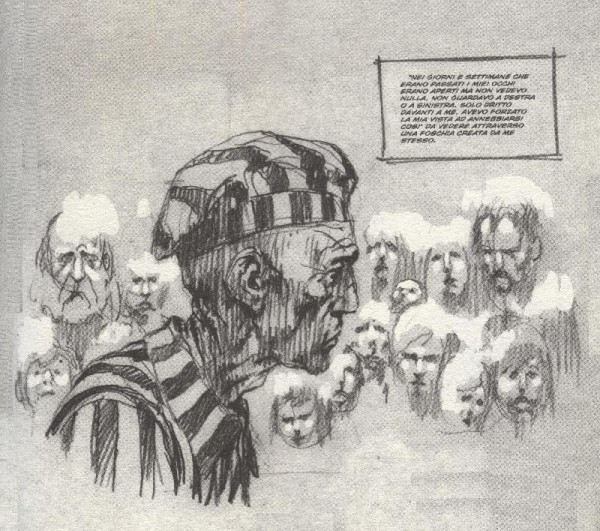
In the 2000s, Kubert drew two graphic novels that were published from his pencils: one from iBooks:
Yossel: April 19, 1943 (2003) and one from DC:
Dong Xoai (2009).
Jew Gangster from 2005 was a black and white work with gray tones added in at a later date. Kubert drew the original graphic novel
Sgt. Rock: Between Hell And A Hard Place for writer Brian Azzarello in 2003 and created the six-issue
Sgt. Rock: The Prophecy in 2006. Kubert also assumed the artist's duties for
PS Magazine during this same period. 2008 saw the publication of another six-issue series,
Tor: A Preshistoric Odyssey. Kubert drew the
Sgt. Rock story that appeared in 2009's tabloid comic
Wednesday Comics. He had recently worked with his son Andy on one of the
Before Watchmen books. New work from Kubert is scheduled to appear this October, Fantagraphics in November is moving into a third book (
Weird Horrors and Daring Adventures) featuring the artist after a biography (
Man Of Rock, 2008) and an art book (
The Art Of Joe Kubert, 2011) were published.

Joe Kubert was a recipient of a number of comics-related awards. He won Alley Awards in 1962 (Best Single Comic Book Cover) and 1969 (a special award for his contributions to comic art). He won National Cartoonists Society Awards in 1974 and 1980, and was nominated in 1997.
Fax From Sarajevo won the 1997 Eisner for "Best Graphic Album: New" and that year's Harvey Award for "Best Graphic Album Of Original Work." Kubert was inducted into the Jack Kirby Hall Of Fame by the Harvey Awards program in 1997, and entered the Will Eisner Comic Book Hall Of Fame in 1998. Memorial Day weekend 2010 saw the National Cartoonists Society give Kubert their Milton Caniff Lifetime Achievement Award.

Joe Kubert treated his art form, his talent, his collaborators and his students with the respect and attention he expected in return. He avoided any whisper of victim status in a long and impressive career in all facets of mainstream comics, gave practical skills and guidance to two generations of working professionals through his school, and engaged in a later period of more personal comics creation in a variety of styles of which any cartoonist could be envious. He was and will remain one of the great craftsmen of American comic books, and classed the whole place up with his energy, personal example and talent. One of the last living ties to the fecund period of the industry's creation, it is hard to imagine anyone in comics that will be more missed by more people.
Joe Kubert was preceded in death by his beloved wife Muriel in 2008. The Kubert children are Andy, Adam, David, Lisa, and Dan, all of whom survive their father.
Funeral arrangements
were announced for Tuesday, August 14 at Tuttle Funeral Home in Randolph, New Jersey. Details through the link. The family asks that donations be made to the Multiple Myeloma Foundation in Joe's name. Sympathy cards can be mailed to the Kubert Family at The Kubert School, 37 Myrtle Avenue, Dover, NJ 07801.
*****
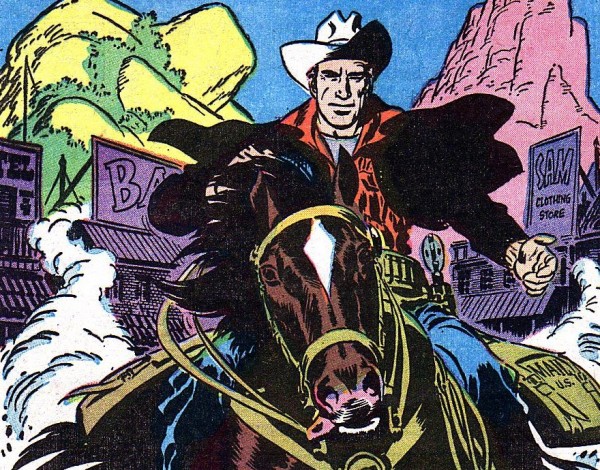
*****
*****
posted 6:00 am PST |
Permalink
Daily Blog Archives
November 2019
October 2019
September 2019
August 2019
July 2019
Full Archives


